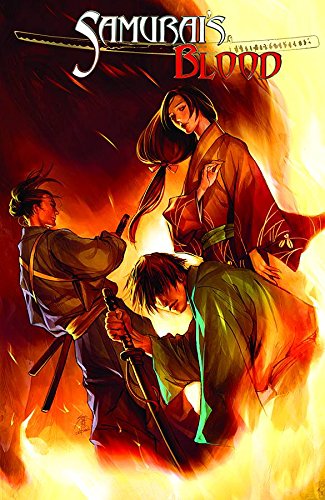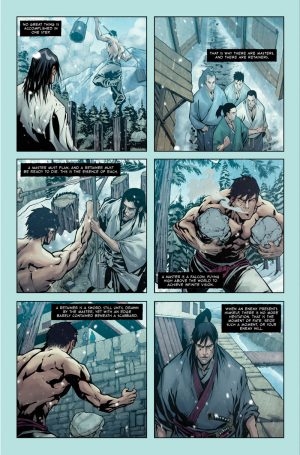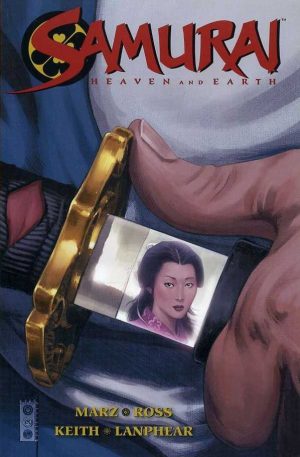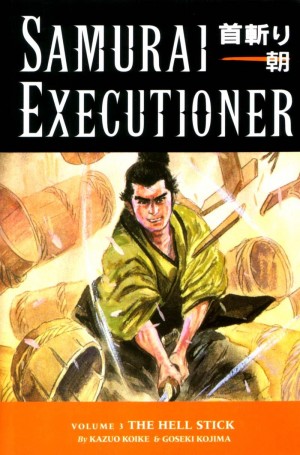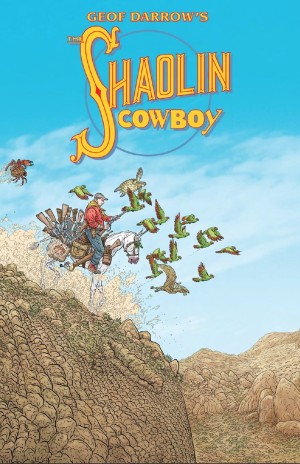Review by Ian Keogh
After the local Lord hands down a ruling not to the liking of a powerful clan, he’s not long for the world, following which the dissidents led by one Gakushi set about targeting the Sanjo clan, favoured by the ruling. Only three teenagers survive a series of assassinations, leaving Jun now head of the clan, and brother and sister Katashi and Mayuko beneath him. Fortunately Jun had already begun his sword training and showed a natural aptitude.
Setting his feature in Japan’s sixteenth century feudal era, Owen Wiseman wears his influences on his sleeve, making Samurai’s Blood an effective amalgam of every Samurai story he’s ever read or seen. It’s a tale of growth, patience and revenge, with Wiseman’s captions narrating the exercises and experiences the true samurai masters. He doesn’t swerve much from tradition, but Wiseman constructs his six chapters effectively, and while it seems he’s setting too much up for the long term, that isn’t the case despite entire chapter interludes devoted to the activities of a single character, detailing their recent past until they join forces with others. The story of Koga Iemitsu stands out, not just for showing a stealthy ninja and master swordsman, and the occasional neat one-liner, but also for the surprising way it adds a new dimension to the events of earlier chapters.
During these, it’s unclear how much time is passing. We see Mayuko being abducted, leaving Jun and Katashi to fall in with one Horitomo, someone able to offer more training. It’s asked how long it’s been since Mayuko was taken, and we then learn what happened to her over an entire chapter. If all that really took place in two weeks she packed a hell of a lot of unpleasant experiences in.
While Wiseman sticks closely to the parameters of the traditional samurai comic, Nam Kim’s art is a departure. It’s good, his storytelling, locations and action scenes well realised, but he’s not the best at ensuring the cast look different enough. Furthermore, Kim’s people are sculpted more like superheroes. They’re chunky and angular, rippling with muscles, and as they’re often seen with their shirts off, it’s apparent these muscles don’t always resemble those on humans. It’s a viable approach, if not perhaps to all tastes. The same might be said about his explicit use of on-panel violence, with considerable red colouring needed to ensure events live up to the title.
Samurai’s Blood is enjoyable adventure, and it’s surprising that neither creator has made much of an impact since.
